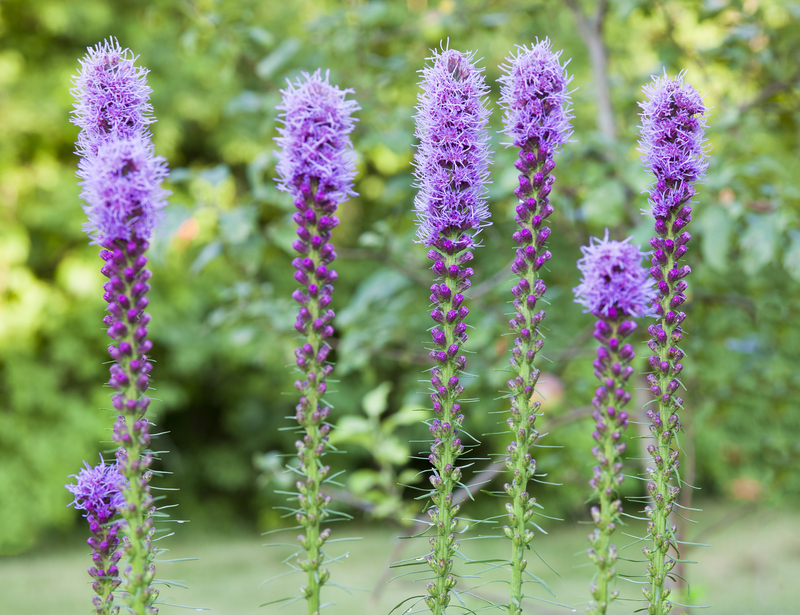Cultivating Rich Soil from Organic Leftovers
Posted on 22/08/2025
Cultivating Rich Soil from Organic Leftovers: Harnessing the Power of Kitchen and Garden Waste
Transforming organic waste into rich, productive soil is not just environmentally responsible--it's a deeply satisfying and surprisingly simple process for any gardener, homeowner, or eco-conscious citizen. By learning how to cultivate nutrient-dense soil from your everyday kitchen scraps and garden trimmings, you can create a flourishing garden, reduce your carbon footprint, and put waste to productive use.
Understanding the Value of Organic Leftovers
Every day, homes generate vast amounts of organic leftovers: peels, coffee grounds, eggshells, wilted greens, lawn clippings, and pruned branches. Instead of tossing these potential resources into the landfill, you can harness them to cultivate nutrient-rich soil right in your backyard.
- Minimizes landfill waste: Composting organic waste reduces the volume of garbage sent to landfills, limiting methane emissions.
- Improves soil health: Organic matter increases soil fertility, aeration, and water retention, essential for robust garden growth.
- Saves money: Recycling your organic remnants into soil means purchasing less fertilizer and soil amendments.
- Supports biodiversity: Rich, humus-laden soil fosters diverse microbial and insect life.
Cultivating rich soil from organic leftovers is a time-honored tradition aligned with nature's own cycles, connecting us directly to the land beneath our feet.

What Can You Compost? Identifying Suitable Organic Materials
The first step in producing nutrient-rich soil from waste is recognizing what can and cannot be composted. Not all materials break down equally or are safe to use.
Greens vs. Browns: Achieving the Perfect Balance
- Green materials: High in nitrogen, these include vegetable trimmings, fruit peels, coffee grounds, and fresh grass clippings.
- Brown materials: Rich in carbon, these consist of dried leaves, shredded cardboard, paper towels, twigs, straw, and sawdust (from untreated wood).
A balanced compost pile should contain about two to three parts brown material for every one part green material. This ratio supports fast decomposition, minimizes unpleasant odors, and helps to create a *fertile, crumbly compost* ideal for enriching your soil.
Items to Avoid in Composting
- Meat, fish, dairy, and oily foods (they attract pests and create foul odors)
- Diseased plants (to prevent spreading pathogens)
- Weeds that have gone to seed
- Pet feces (may introduce harmful parasites)
- Charcoal ash and treated wood (can be toxic)
By carefully selecting what goes into your compost heap, you lay the foundation for cultivating high-quality soil.
Getting Started: Methods to Turn Organic Leftovers into Rich Soil
There are several methods and systems designed to help you convert kitchen and garden waste into garden gold. Let's explore the most popular and effective ways:
1. Traditional Composting
Composting is simply the controlled breakdown of organic matter. With nothing more than a pile or bin, you can repurpose leftover organic materials into black, crumbly soil teeming with nutrients.
How to Build a Compost Pile or Bin:- Choose a location: Find a spot in your yard with good drainage and partial sun.
- Layer greens and browns: Alternate layers, starting with coarse materials at the base for airflow.
- Maintain moisture: Compost should feel like a wrung-out sponge--not too wet or dry.
- Turn regularly: Aerate the pile every few weeks with a pitchfork or compost turner to speed decomposition and prevent odor.
Within three to six months, depending on conditions, you'll have loamy, odor-free compost ready to revitalize your garden soil.
2. Vermicomposting (Worm Composting)
Vermicomposting uses special composting worms--usually red wigglers--to consume and transform kitchen scraps into exceptionally rich vermicast or worm castings. This is an especially good option for small-scale, indoor composting.
Steps to Start Vermicomposting:- Obtain a worm bin or build one from a plastic tub with ventilation holes.
- Add bedding (shredded paper, coconut coir, torn egg cartons) and moisten it.
- Introduce red worms and begin feeding them small, chopped scraps.
- Harvest worm castings every few months to add directly to soil or use as a top-dressing for plants.
Vermicompost is renowned for its high microbial content and the ability to enhance both soil structure and plant growth.
3. Bokashi: Fermentation-Based Composting
Bokashi composting is an anaerobic (oxygen-free) method originating from Japan. Using special bran inoculated with friendly microbes, this method ferments all kinds of organic leftovers--including dairy, cooked food, and small meat scraps--making it uniquely versatile.
Bokashi Basics:- Layer food scraps and sprinkle Bokashi bran in a dedicated airtight bucket.
- After the bucket is full, seal it tightly for about two weeks to ferment.
- Bury the pre-compost material in garden soil; it will fully break down in another two to four weeks, enriching the earth beneath.
Bokashi is ideal for urban settings with limited outdoor space, quickly transforming organic leftovers into rich, fertile soil amendments.
Troubleshooting Common Problems: Tips for Healthy Soil Cultivation
Even the best-intentioned efforts can encounter obstacles. By understanding some common composting problems, you can address issues quickly and keep your soil-improving project on track:
- Solution for foul odors: Bad smells usually signal too much green material or excess moisture. Add more brown material and turn the pile regularly.
- Pest invasion: Never include meat, dairy, or oily foods. Cover new additions with dry leaves or finished compost.
- Slow decomposition: Ensure your pile has enough nitrogen-rich "greens," ample moisture, and regular aeration.
- Matted layers: Break up dense materials like grass clippings and leaves to allow airflow and prevent compaction.
With patience and attention, your organic leftovers will decompose into a lush, fertile material that drastically improves your soil.
Benefits of Cultivating Rich Soil from Organic Waste
1. Boosts Plant Health and Yields
Compost-infused soil is packed with vital nutrients and a living network of beneficial microorganisms. These enhance root development, ward off diseases, and support strong, resilient crops and ornamental plants.
2. Improves Soil Structure
Adding compost increases the soil's ability to hold moisture, improving drought tolerance while preventing erosion and compaction. Loose, friable soil also makes planting and weeding easier.
3. Reduces Reliance on Synthetic Chemicals
By producing your own *fertile, organic soil*, you lower dependence on chemical fertilizers and pesticides, creating a safer, more sustainable ecosystem for your family and local wildlife.
4. Lowers Your Environmental Impact
Composting sends less waste to incinerators and landfills, curbing greenhouse gas emissions and reducing pollution. Enriching your soil with natural amendments closes the loop on food and yard waste right at home.
How to Use Homemade Compost: Practical Applications in the Garden
The best part of cultivating lush, fertile soil from organic leftovers is putting it to work. Here's how to maximize the impact of your homemade compost:
- Top-dressing: Spread a thin layer around the base of established plants and trees for a nutrient boost.
- Soil amendment: Mix compost into planting beds, vegetable plots, and potting mixes to enhance fertility and structure.
- Lawn booster: Sprinkle fine, sifted compost over lawns in spring and autumn for greener, more vigorous grass.
- Compost tea: Steep compost in water to create a liquid fertilizer suitable for foliar spraying or root drenching.
Redefining Waste: The Future of Soil Cultivation
Modern lifestyles generate vast streams of organic leftovers, but armed with knowledge and a bit of effort, you can turn this "waste" into a vital ecological resource. Whether through backyard composting, worm bins, or Bokashi fermentation, every handful of kitchen peels and yard trimmings carries the potential to nourish your garden and restore soil health.
Community Composting and Urban Initiatives
Even urban dwellers can participate in organic waste recycling. Local composting hubs, curbside collection programs, and shared community gardens increasingly offer opportunities to divert food scraps and produce rich soil for shared benefit.

Frequently Asked Questions: Cultivating Rich Soil from Organic Leftovers
- Q: How long does it take to make compost?
A: Depending on the method and conditions, compost can be ready in as little as three months for actively managed piles, or up to a year for passive piles. - Q: Can I compost in an apartment?
A: Yes! Vermicomposting or Bokashi bins work well in small spaces without producing offensive odors. - Q: Will compost attract pests?
A: If you avoid adding meat, dairy, or oily foods, and cover green scraps with browns, pests are rarely a problem. - Q: How much compost should I add to my garden?
A: Generally, 1-2 inches worked into the topsoil annually is sufficient for vegetable beds; top-dressing as needed for established plants.
Conclusion: Start Transforming Organic Leftovers into Rich Soil Today
Every home has the power to transform organic waste into living, nutritive soil. By adopting composting--whether through traditional bins, worm farming, or Bokashi fermentation--you not only enrich your own garden but contribute to a healthier planet. Start gathering your kitchen and garden scraps, follow the tips above, and watch as humble leftovers become the secret to abundant plant growth and restorative soil.
Start cultivating rich soil from organic leftovers today--and become an agent of ecological renewal from your own backyard!



